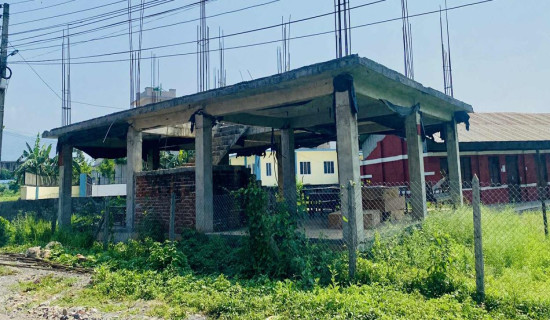- Saturday, 21 June 2025
Flying After A Fall
On June 12, 2025, an Air India Boeing 787 Dreamliner headed to London from Ahmedabad crashed shortly after takeoff, killing 241 people on board and at least 28 on the ground. After the crash, I connected with several aviation professionals. One senior crew member shared how they’ve been rethinking even the smallest details—like how carrying extra fuel affects take-off weight. Another, who has flown since the crash, said he felt completely blank during that flight. “It was like my brain just turned off,” he told me. That line stayed with me. Trauma isn’t always loud. Sometimes it sneaks in, quiet and numb.
A colleague who often travels for work said the incident shook her more than she expected. “I’ve always been scared of flying,” she said. “But now I keep thinking death really can come anywhere. I thought the sky was the scariest part. Now, I’m not so sure.” Another crew member has been attending multiple cremations and prayer meetings for colleagues lost in the crash, while managing flying duties and family responsibilities. He told me, “If someone says life is tough, ask them to talk to me. Grief and pain have taken on a whole new dimension. But your prayers are what keep me going.”
This tragedy didn’t just rattle the aviation industry. It quietly reached into the lives of those who fly—for love, work, or home. Even if we had no connection to that flight, something shifted. And in quiet moments, we still ask, “Could that happen to me?” Flying can bring a mix of stress—feeling out of control, physically exposed, and overwhelmed by everything going on around you. Even mild turbulence can feel terrifying. While it’s usually harmless, our bodies react as if we’re in real danger. Muscles tense, palms sweat, and hearts race. It’s the classic fight or flight response—but when you’re 35,000 feet in the air, there’s no place to run.
People don’t always panic in obvious ways. Some feel numb or disconnected, especially after seeing something distressing like a sudden drop or a medical emergency. An aviation worker once told me, “Some passengers go completely blank.” It’s like the brain just freezes. That too is a trauma response—the mind’s way of protecting itself when things get too much. Even if you didn’t know anyone on the June 12 flight, the story might stay with you. Media coverage, images, and survivor accounts can trigger vicarious trauma—a psychological response to second-hand distress.
This hits especially hard for aviation professionals and frequent flyers. Hearing about a crash, especially on a familiar route or airline, can stir creeping fear—making it harder to sleep, causing pre-flight anxiety, or heightening alertness mid-air. During turbulence, some may notice shallow breathing, snap to attention when the seatbelt sign dings, or anxiously study the cabin crew’s faces for reassurance. What if your job is to be in the air when something traumatic happens? The unspoken rule for aviation pros is clear: Keep going. Flight attendants and pilots are trained to stay calm and handle emergencies, but that doesn’t mean it doesn’t leave a mark.
Many airline workers who’ve faced emergencies or crashes struggle with anxiety, burnout, and even PTSD. A large study found that while many pilots reported depression and suicidal thoughts, few sought help, fearing career fallout. Similarly, another study found that over 40 per cent of pilots reported serious burnout but avoided support due to worries about fitness-to-fly checks. After events like the June crash, crew often keep flying without time to recover, check-ins, or debriefs. In aviation—like many high-risk jobs—emotions are put aside to keep going. But unprocessed trauma doesn’t just vanish.
Flying again after experiencing or hearing about an emergency can stir up a lot of conflicting feelings. But for many, flying isn’t a choice; it’s how they get to family, work, or home. The decision to board again often has less to do with comfort, and more to do with necessity. In moments like these, it’s worth pausing to notice the quiet courage it takes to keep going. Resilience doesn’t mean you're not scared. It means you move forward with that fear in your pocket.
While individuals develop personal coping strategies, the aviation industry must also prioritise mental health infrastructure. This includes normalising psychological support for crew and pilots, offering anonymous, third-party access to mental health professionals, creating protocols for emotional debriefing after critical incidents, even near misses, and recognizing cumulative trauma in frequent flyers and long-haul staff. Flying after a crash means stepping into the unknown and choosing to believe the sky can still be safe, even if it once wasn’t. That belief isn’t naïve; it’s resilient.
-Psychology Today














-original-thumb.jpg)


